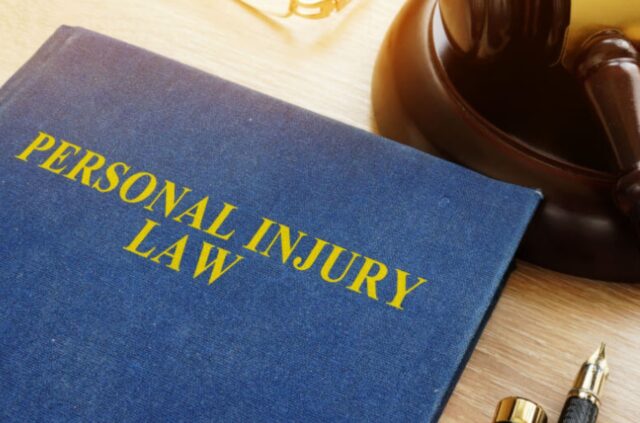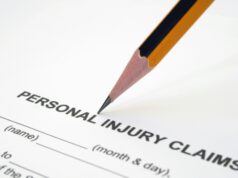
When someone is in an accident and files a personal injury lawsuit, one of the things you might hear discussed is pain and suffering.
This is particularly true in more severe accidents, such as truck accidents. According to the law offices of George Salinas, the average weight of a semi-truck is 33,000 pounds. As such, if you or your loved one is in an accident with a big truck, the damage can be catastrophic.
This is where the term pain and suffering may be relevant, but since it’s somewhat of a subjective concept, it’s useful to have an idea of what it usually refers to and how it’s calculated.

An Overview of Pain and Suffering
Falling under the larger umbrella of “pain and suffering” are two concepts.
First, there’s physical pain and suffering. This refers to the pain an accident victim endures because of their physical injuries. It can also take into account the future adverse effects the plaintiff may suffer because of the accident.
Then, there’s mental pain and suffering. This does relate to physical injuries, but it goes beyond that to the mental pain and suffering resulting from the injuries and their effects.
As an example, if you’re injured you might experience fear, anger, anxiety, or loss of enjoyment of life.
Mental pain and suffering can refer to a broad set of symptoms of emotional pain that someone suffers after an accident. Examples of signs of mental pain and suffering can include depression, mood swings, and sleep disturbances.
Some people also develop symptoms of post-traumatic stress disorder (PTSD) after an accident, which can also be categorized as mental pain and suffering.
Similar to physical pain and suffering, mental pain and suffering can include what the accident victim will likely experience in the future, as well as what they experience presently.

Examples of Pain and Suffering
There are examples of pain and suffering, ranging from mild to severe.
A severe example would be someone with perhaps several broken bones and a traumatic head injury. In this case, the person might develop anxiety or depression and could have sleeping and eating disturbances.
Someone with severe mental pain and suffering could experience problems in relationships and find they cannot return to work or other activities in their daily life.
If someone developed depression because of an accident and their injuries, it could affect them for years or the rest of their life.
In that case, the person might be able to claim damages like lost income related to mental pain and suffering.
There are also much less severe cases of mental pain and suffering. For example, someone might get a back injury and find they’re not able to do their favorite types of exercise anymore.
It could negatively affect them mentally, so while it could be a minor impact, it could still qualify as pain and suffering.

What Type of Damages are Pain and Suffering?
Pain and suffering damages aren’t quantifiable by a certain dollar amount. They are subjective and based on the feelings and experiences of the person injured in an accident.
It’s different from damages such as lost wages or medical expenses, which can be very specifically calculated.
In personal injury cases, a jury would assign a monetary dollar value to pain and suffering damages.
Types of pain and suffering damages can include:
- Physical pain: Pain can be mild to severe, and if you’re in an accident, your injury can cause you physical pain or distress.
- Mental anguish: Examples of mental anguish or suffering can include anxiety, grief, depression, trauma, or distress following an accident.
- Loss of enjoyment: The idea of loss of enjoyment of life refers to a situation where you’re in an accident and because of injuries, you can’t participate in aspects of your life that you enjoy before being injured.
- Physical impairment: If you’re physically impaired, and it prohibits you from performing certain activities or limits your movement, that could fall into the category of pain and suffering.
- Disfigurement: Disfigurement like permanent scarring that affects your appearance is included in pain and suffering.
- Loss of quality of life: If you aren’t able to enjoy your life the way you did before an accident, it’s considered a loss of quality of life.
- Anger: You can claim damages if you have anger following injuries from an accident.

How Are Pain and Suffering Calculated?
Calculating pain and suffering can be more nuanced and trickier than calculating other accident damages.
There’s no specific rule an insurance company is going to use, but an attorney will often one of two methods.
The first method multiplies the actual damages, which are lost wages and medical bills by another number. The number is often between 1 and 5 and is based on how severe the injury is.
This can be called the multiplier method.
There’s also another method using a per diem concept.
When an attorney uses this method for calculations, they take a certain amount and assign it to every day from the time an accident occurs to when a plaintiff reaches their maximum recovery.
Just because attorneys may use these calculations, it doesn’t mean insurance companies have to consider them in their calculations.
A software program may be used by an insurance company, and these programs will consider the type of injury and the required medical treatment.

Finally, how do you prove pain and suffering?
Much of your proof will rely on evidence like journals that you keep throughout your recovery and photographs. Documentation can also come from family members that will show ways your injuries affected your life. You’ll also want to show proof of not just injury treatment, but perhaps the treatment you receive from a mental health professional as well.
An attorney can help you as you work with an insurance company to determine if what they’re offering you is considered fair compensation for your pain and suffering.









